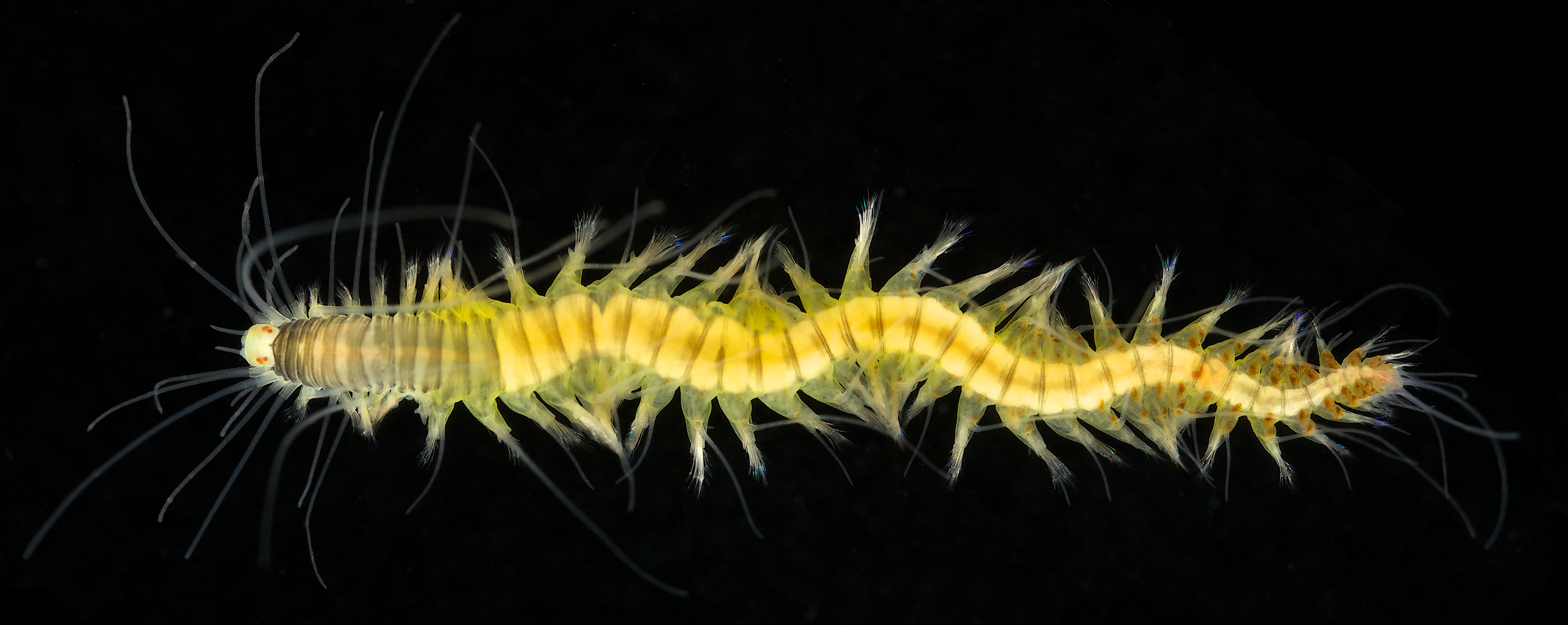Nereimyra punctata
This is the most common species of Hesionidae in shallow waters in Norway and is found on hard substrates as well as in sand. It is characterised by a colourful yellowish body with green-black transverse bands on each segment, more conspicuous on the anterior segments.
- Innhold
- Measurements
- Characteristics
- Look-alikes
- Biology, ecology and behaviour
- Habitat
- Recommended citation
Measurements
Up to 2.5 cm long with at most 50 segments.
Characteristics
Both living, and in most cases preserved specimens, are easily identified by its colour pattern. Members of this species are yellowish with green-black transverse bands on each segment.
Look-alikes
Preserved specimens that have lost their pigmentation cannot morphologically be distinguished from Nereimyra woodsholea. This latter species is found on muddy sediments deeper than 50 meters in contrast to N. punctata that is found on more coarse sediments in more shallow waters. Small juvenile specimens of N. punctata that still have their median antennae can be confused with specimens of Gyptis propinqua, another hesionid species found in Norwegian waters. However, Nereimyra has chaetae starting from segment 4, while Gyptis has chaetae starting from segment 5.
Biology, ecology and behaviour
Reproduction takes place in the spring. The species is an active predator that feeds on small invertebrates, typically small annelids and crustaceans.
Habitat
Nereimyra punctata lives in shallow waters down to about 50 meters depth on hard bottoms, in gravel and sand.
Recommended citation
Nygren A. Nerimyra punctata. www.artsdatabanken.no/Pages/313099. Downloaded <year-month-day>.
